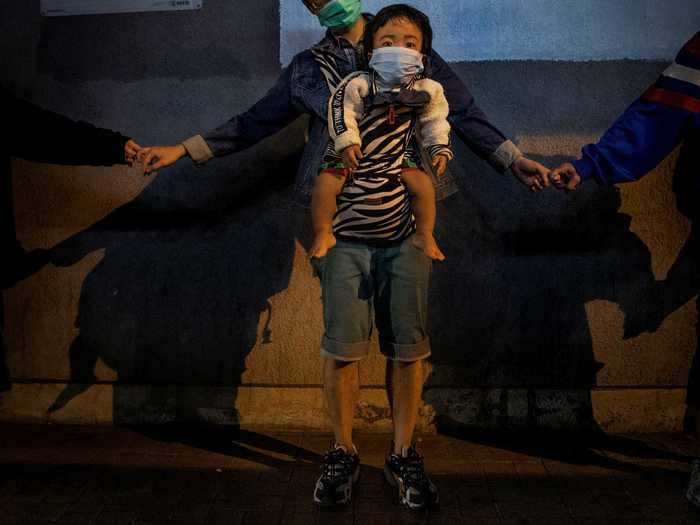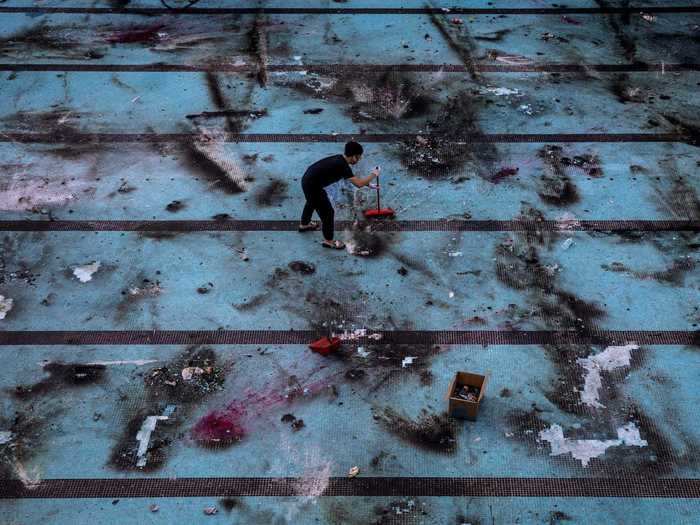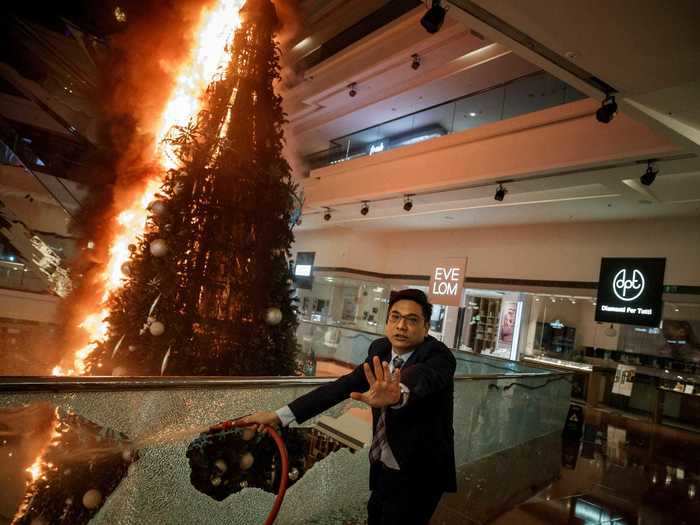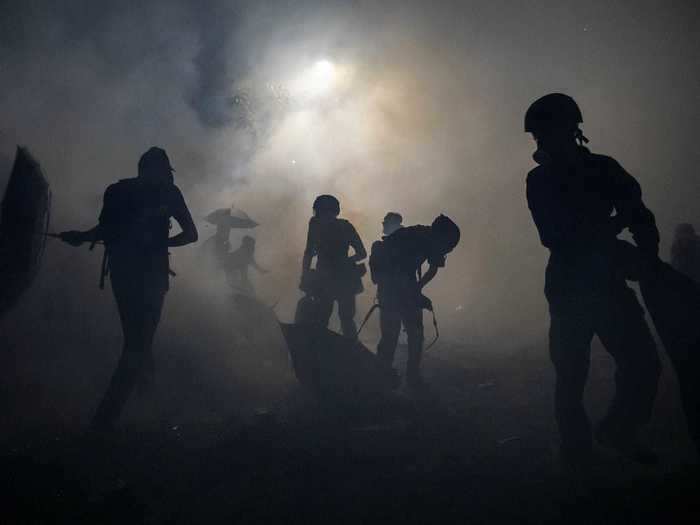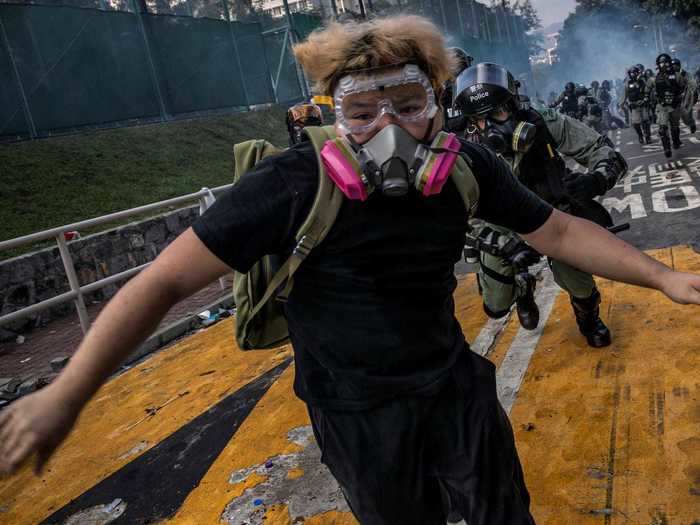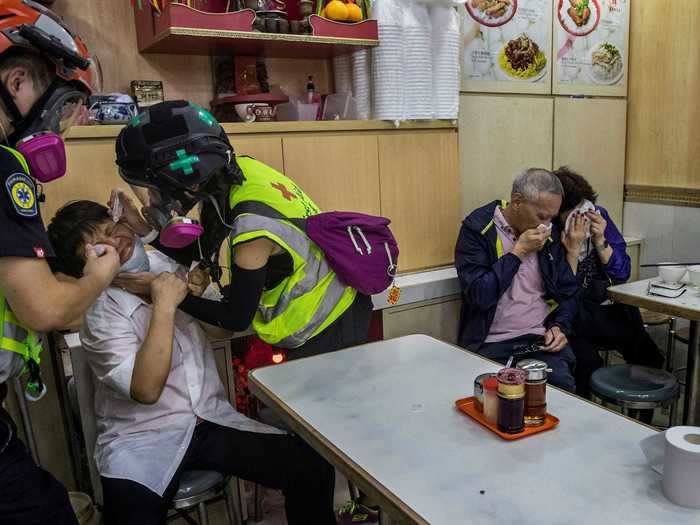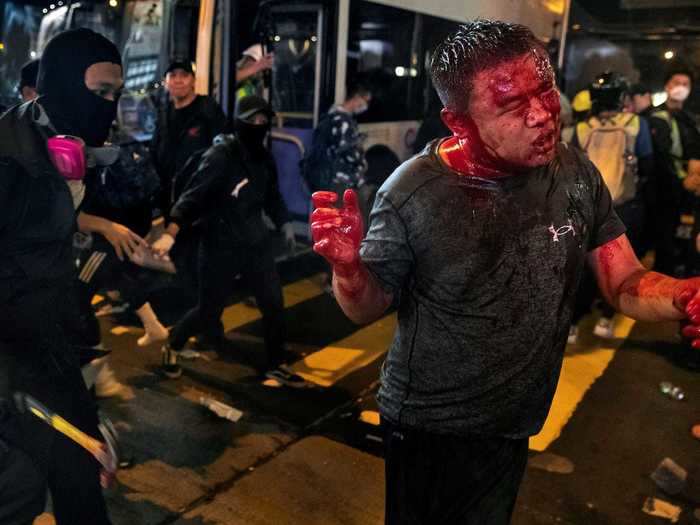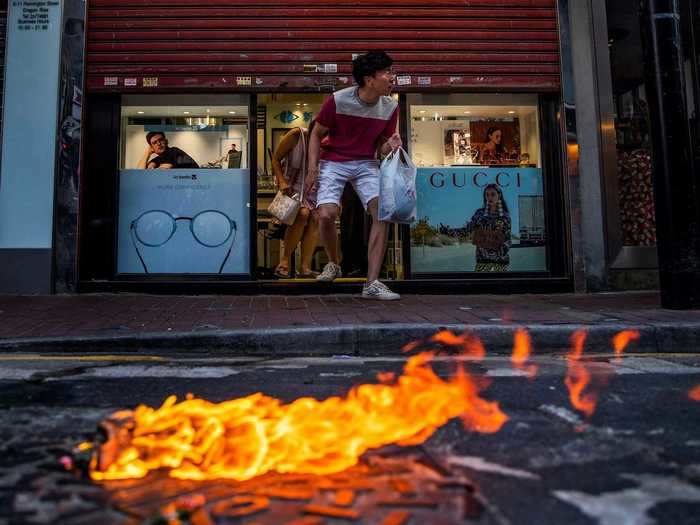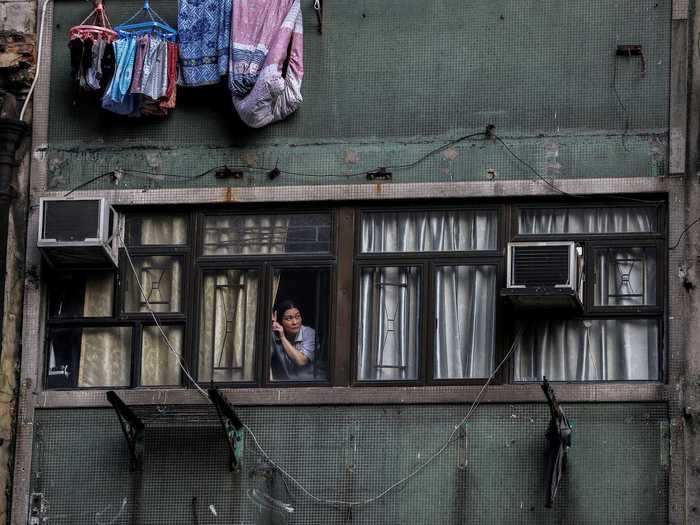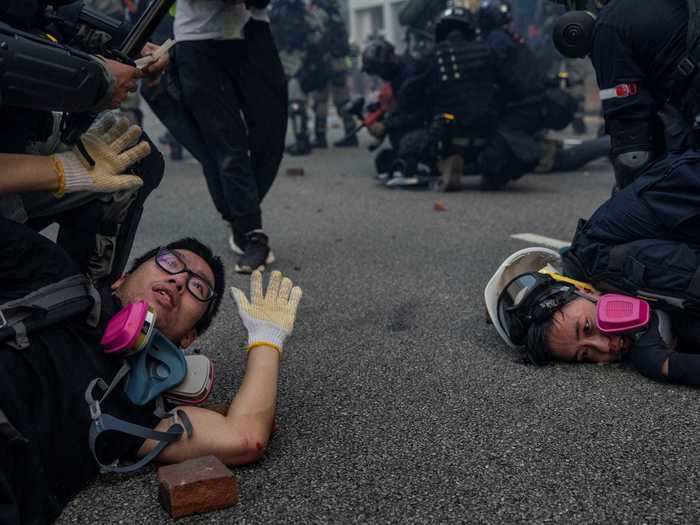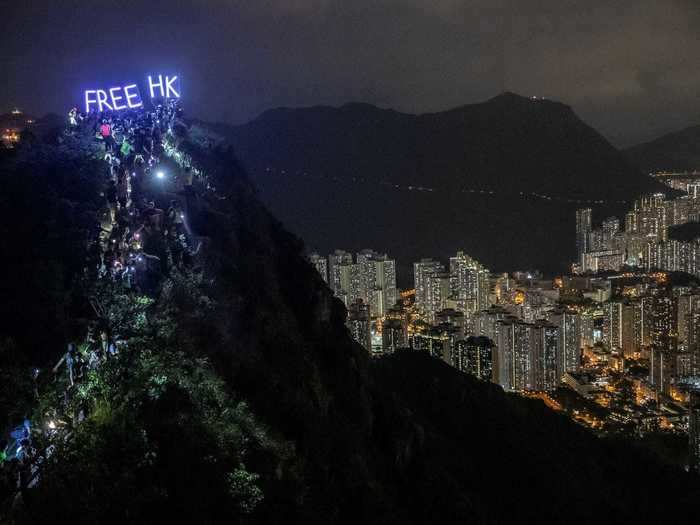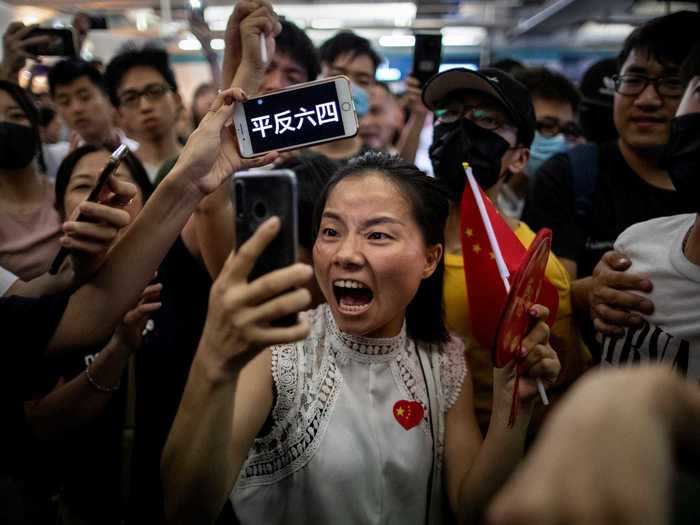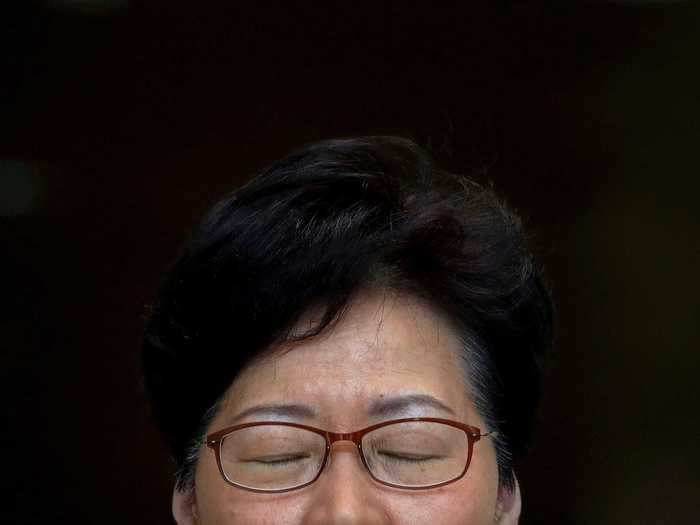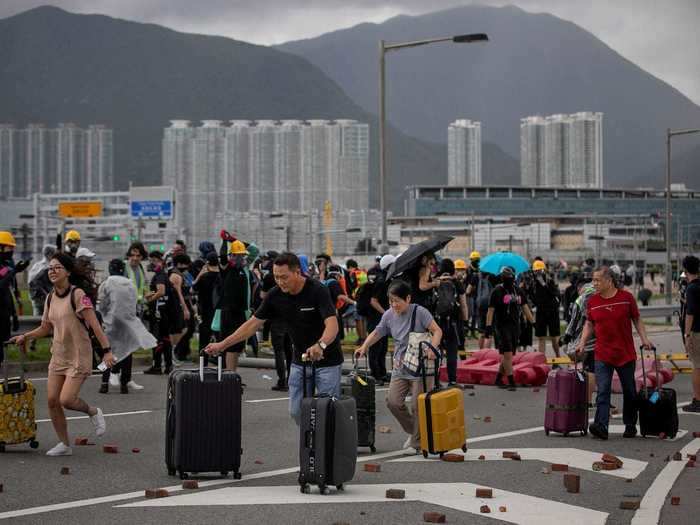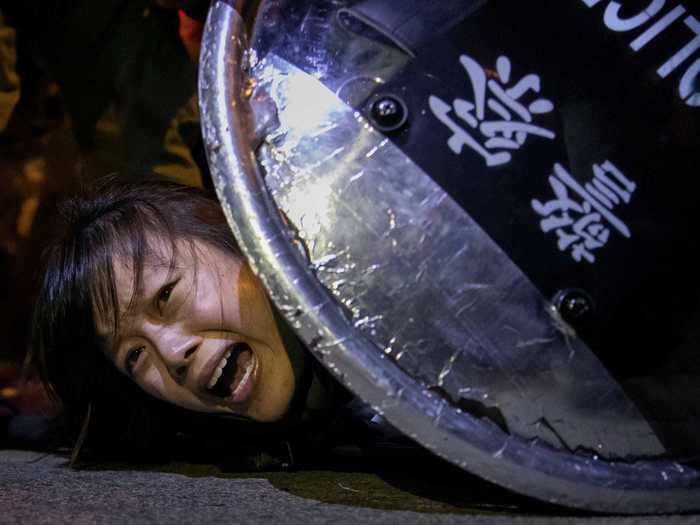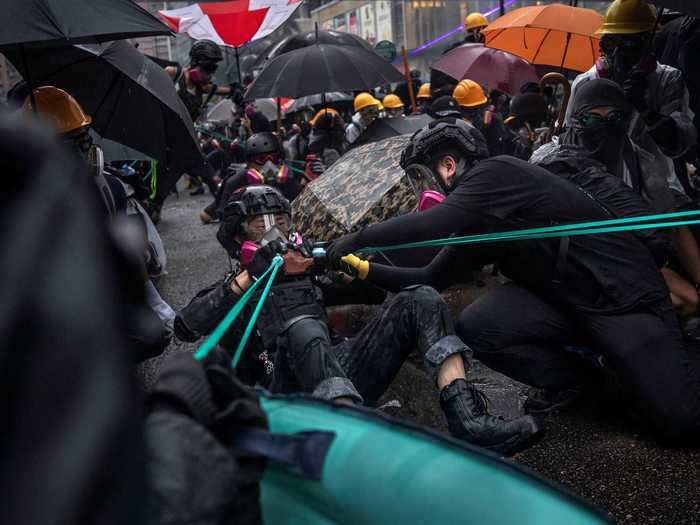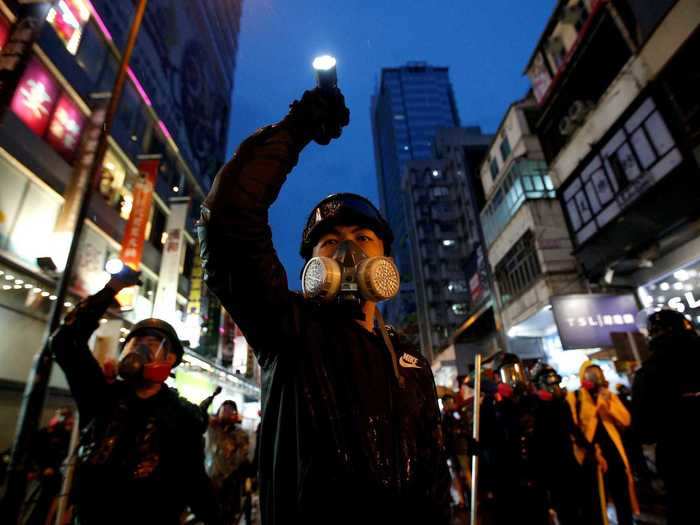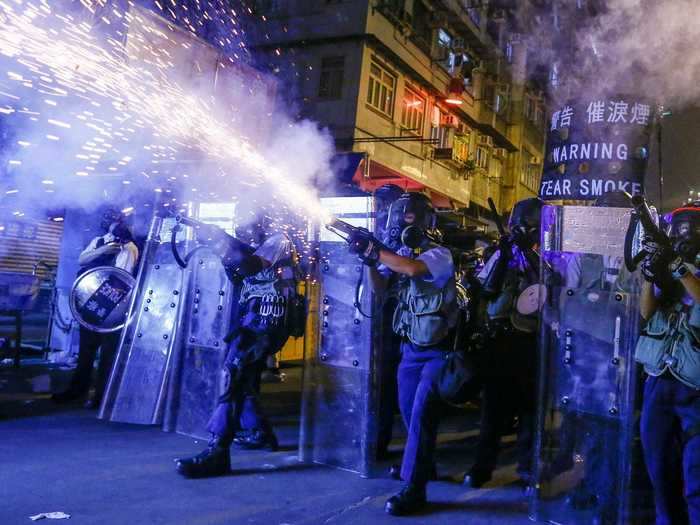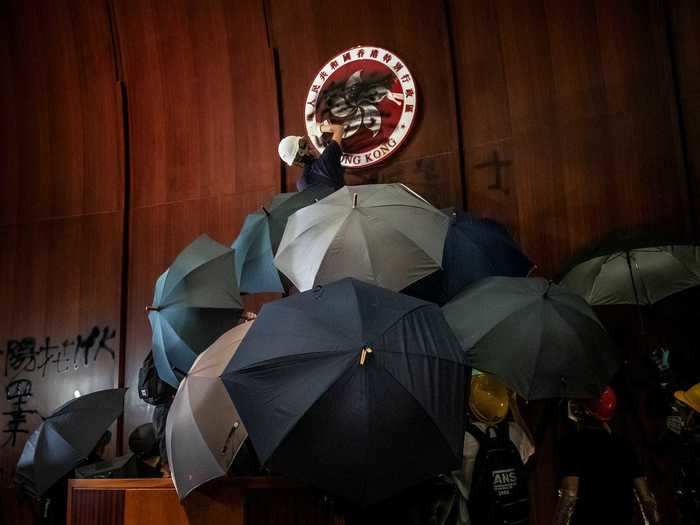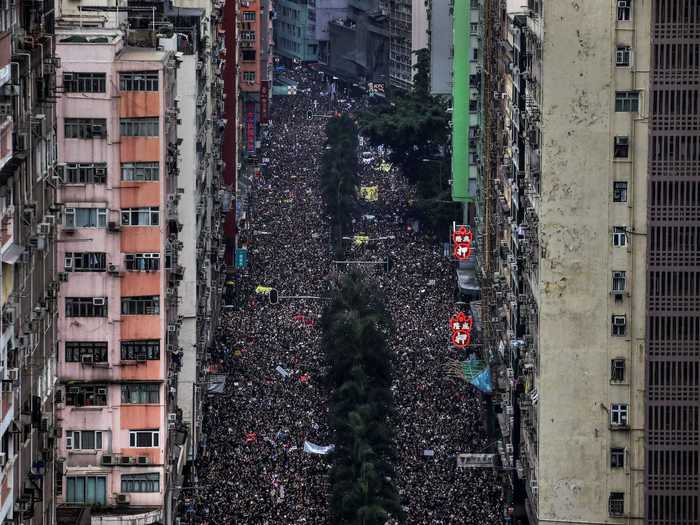A masked anti-government protester, wielding a hammer, attacks a man who bystanders suspected of being a pro-Beijing activist from mainland China, during a protest in the Mong Kok area in Hong Kong, China November 11, 2019.Thomas Peter/REUTERS
- On Monday, Reuters was announced the Pulitzer Prize winner of the "Breaking News Photography" category for its coverage of last years violent protests in Hong Kong.
- "Our photographers brilliantly captured the magnitude of the protests in Hong Kong," Reuters editor-in-chief, Stephen J. Adler said in a statement. "Their images were beautiful, haunting, illuminating, and deeply memorable."
- Taken as the protests raged on from June to November, these photos revisit the turbulent nature of the demonstrations, with coverage provided by Insider.
- Visit Insider's homepage for more stories.
Millions of protesters took to the streets of Hong Kong last year in a battle for democracy that at times turned violent, destructive, and deadly.
From June to November, protests largely defined the political landscape of the semi-autonomous country, and journalists were at the forefront to document the fight.
On Monday, a Pulitzer Prize – the most prestigious award in journalism – was granted to the Reuters photography team for documenting months of breaking news in Hong Kong.
These incredible photographs give insight into how Hongkonger's and the police clashed during months of turbulent demonstrations.
Read the original article on
Insider
By the end of November, the university protests had subsided but demonstrators still gathered to stand in solidarity with one another in the pro-democracy battle for Hong Kong. "We can't back down," one protestor told Business Insider. "We have reached the point of no return."
A child sits in carrier wearing a mask as anti-government protesters hold hands to form a human chain in a sign of solidarity in Kowloon Bay, Hong Kong, China, November 30, 2019.
Leah Millis/REUTERS
The protests lasted weeks and resulted in mass destruction of the campuses, huge amounts of weaponry debris, and the arrests of citizens and students.
A man clears debris following the clashes between police and anti-government protester after a two-week campus siege of the Polytechnic University in Hong Kong, China, November 16, 2019.
REUTERS/Adnan Abidi
Protestors used weapons including bows and arrows, catapults, and Molotov cocktails. Riots took place in numerous locations throughout the city, and destruction occurred in public spaces including malls and major roads.
Mall security personnel urges caution as he tries to extinguish a burning Christmas tree at the Festival Walk mall in Kowloon Tong, Hong Kong, China November 12, 2019.
Thomas Peter/REUTERS
Police charged both universities, fired tear gas at students, and arrested protestors for rioting. "There seems to be no end to protests," Harvey, a 22-year-old student at the University of Hong Kong who participated in protests at PolyU, told Insider. "But I'll do whatever I can to support the cause."
Anti-government protesters stand in a cloud of tear gas unleashed during a stand off with riot police at the Chinese University of Hong Kong, in Hong Kong, China November 12, 2019.
Tyrone Siu/REUTERS
The Chinese University of Hong Kong (CUHK) and Hong Kong Polytechnic University (PolyU) became battlegrounds, and students as young as 15 years old took over campuses to barricade themselves from the police and create weapons to use against them.
An anti-government protester, who later identified himself as a university student, is chased by riot policemen after skirmishes at the Chinese University of Hong Kong, in Hong Kong, China November 12, 2019.
Tyrone Siu/REUTERS
The violence from these protests quickly spread to university campuses, and became the most intense of the demonstrations to date. Police began firing hundreds of rounds of tear gas and water cannons at protestors who gathered throughout the city.
A restaurant worker receives help from volunteers as patrons cover their faces after riot police fired tear gas nearby in Hong Kong, China November 2, 2019.
Tyrone Siu/REUTERS
In November, the clashes grew even worse. Following the death of a 22-year old related to tear gas firings by police, protestors began implementing a new strategy called "blossom everywhere," which included building roadblocks, disrupting transportation, and vandalizing public areas.
A masked anti-government protester, wielding a hammer, attacks a man who bystanders suspected of being a pro-Beijing activist from mainland China, during a protest in the Mong Kok area in Hong Kong, China November 11, 2019.
Thomas Peter/REUTERS
Officers fired tear gas, water cannons, rubber bullets, and were armed with live ammunition. In some cases, protestors used bricks, barricades, and firebombs. "I believe almost all frontline protesters, including myself, are ready to be arrested or die in protests," Chan told Business Insider.
Customers cautiously exit an eyeglass store past a burning Molotov cocktail as demonstrators clash with riot policemen in Hong Kong, China November 2, 2019.
Tyrone Siu/REUTERS
Tens of thousands of demonstrators continued to take to the streets, and clashes between the police and protestors began to increase.
A woman looks out from the window of a residence as demonstrators march through Hong Kong, China on October 20, 2019.
Ammar Awad/REUTERS
In the following weeks, large-scale demonstrations continued amid two major celebrations: the five-year anniversary of the Umbrella Movement on September 28 and the 70th anniversary of the establishment of the People's Republic of China on October 1.
Anti-government protesters are detained during skirmishes between the police and protesters in Admiralty district, Hong Kong, China, September 29, 2019.
Susana Vera/REUTERS
In mid-September, hundreds of protestors formed a human chain and climbed to the peak of Lion Rock, a hill located above the city. They held up signs that read "Free HK" and chanted "Stand with Hong Kong, fight for freedom."
Hundreds of anti-government protesters gather after climbing to the peak of Lion Rock as a lighted sign is held high in the air, in Hong Kong, China, September 13, 2019.
Leah Millis/ REUTERS
But many saw this decision as "too little and too late," and the protests – particularly among the youth – continued to brew.
A pro-China demonstrator films herself as an anti-government protester holds up a sign on her phone during skirmishes between the two opposing groups at Yuen Long station in Hong Kong, China, September 12, 2019.
Jorge Silva/REUTERS
To some degree, the protests worked: On September 4, Hong Kong Chief Executive Carrie Lam dismantled the extradition bill, and promised to formally withdrawal the legislation in October.
Hong Kong's Chief Executive Carrie Lam pauses while holding a news conference, August 27, 2019.
Kai Pfaffenbach/REUTERS
The presence of the protests could be felt widely throughout Hong Kong. In this photo, travelers at the Hong Kong International Airport are seen pushing their luggage past bricks and barriers set up by demonstrators.
Passengers push their luggage past bricks after anti-government protesters blocked the roads leading to Hong Kong International Airport, in Hong Kong, China, September 1, 2019.
Anushree Fadnavis/REUTERS
What began as a fight against the extradition bill quickly transitioned into a symbolic pro-democracy battle for protections against Chinese authority.
An anti-extradition bill protester is detained by riot police during skirmishes between the police and protesters outside Mong Kok police station, in Hong Kong, China September 2, 2019.
Tyrone Siu/REUTERS
Organizers of the protests put forth five key demands: to completely withdrawal the extradition bill; to refrain from classifying the protests as riots; to release protestors who were unlawfully arrested; to investigate police brutality; to establish fair and free elections in the city.
Anti-extradition bill protesters use slingshots to hurl bricks as they clash with riot police in the market town of Tsuen Wan, located in Hong Kong, China on August 25, 2019.
Tyrone Siu/REUTERS
The demonstrations became largely popular amongst the youth. One study conducted from June to August found that 60% of protesters were younger than 29 years old. "We believe this is the last stand for our future and freedom," Chan, 22, a recent college graduate and protester told Business Insider in early August.
Demonstrators aim their flashlights towards riot police as they are chased through the streets of Hong Kong, China, August 25, 2019.
Willy Kurniawan/REUTERS
Many viewed the bill as a threat to Hong Kong's sovereignty and the protests raged on. In some cases, the demonstrations grew violent and police began firing tear gas and rubber bullets in the streets.
Police fire tear gas and rubber bullets at anti-extradition bill protesters during clashes in the Sham Shui Po district of Hong Kong, China, August 14, 2019.
Thomas Peter/REUTERS
On the 22nd anniversary of the transition from British to Chinese rule and Hong Kong's establishment as a semi-autonomous territory until 2047, protesters stormed the Legislative Council Complex in opposition to the extradition bill.
A man sprays paint over the Regional Emblem of Hong Kong after anti-extradition bill protesters stormed the Legislative Council Complex on July 1, 2019.
Tyrone Siu/REUTERS
In June, hundreds of thousands of people marched against a bill that would allow Hong Kong residents to be extradited to China for trial. Critics feared it would subject residents in the semi-autonomous region to unfair trials and fewer legal protections.
Protesters march through the streets of Hong Kong, China, demanding for its leaders to step down and withdraw the proposed extradition bill on June 16, 2019.
Athit Perawongmetha/REUTERS

